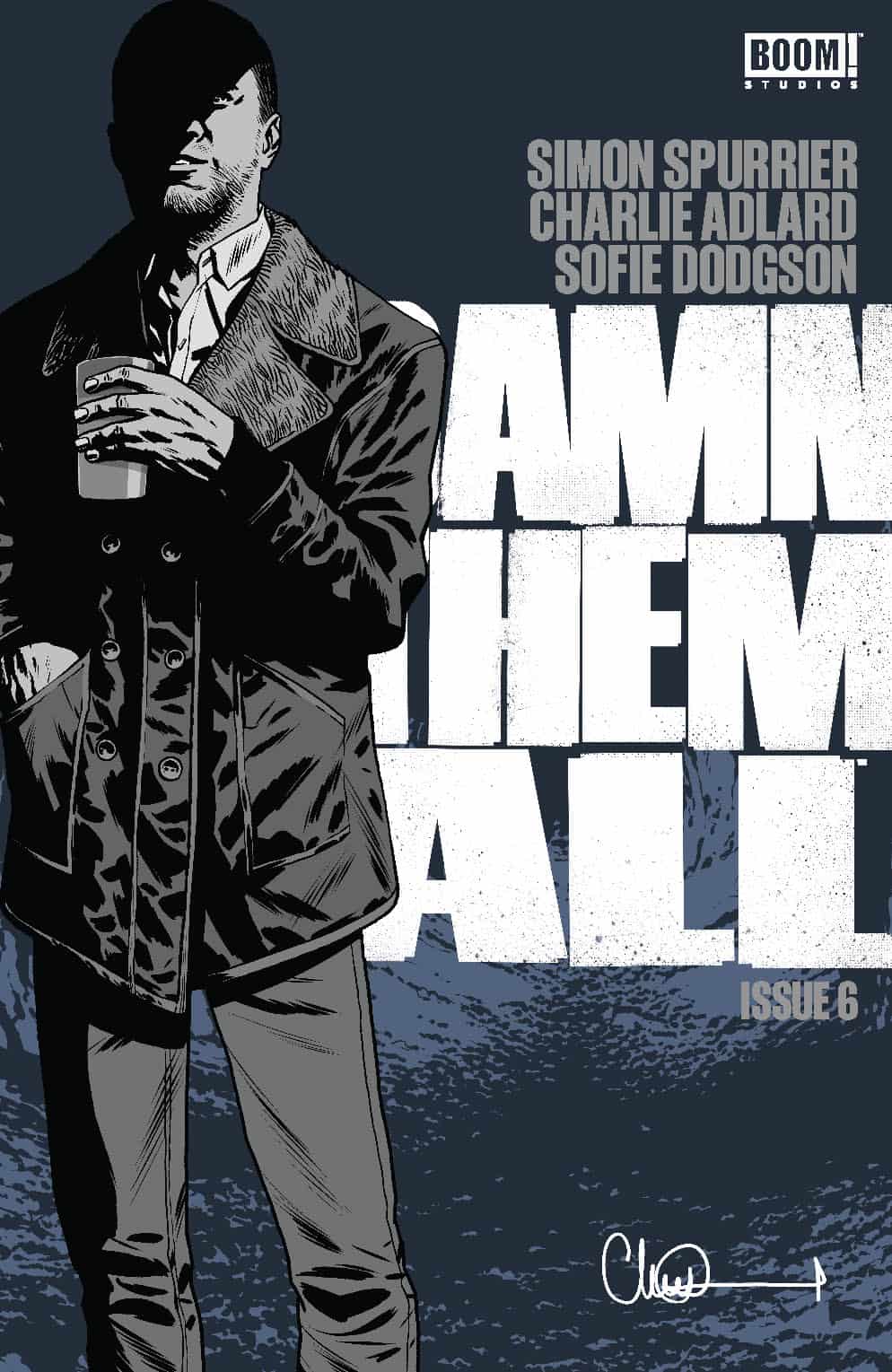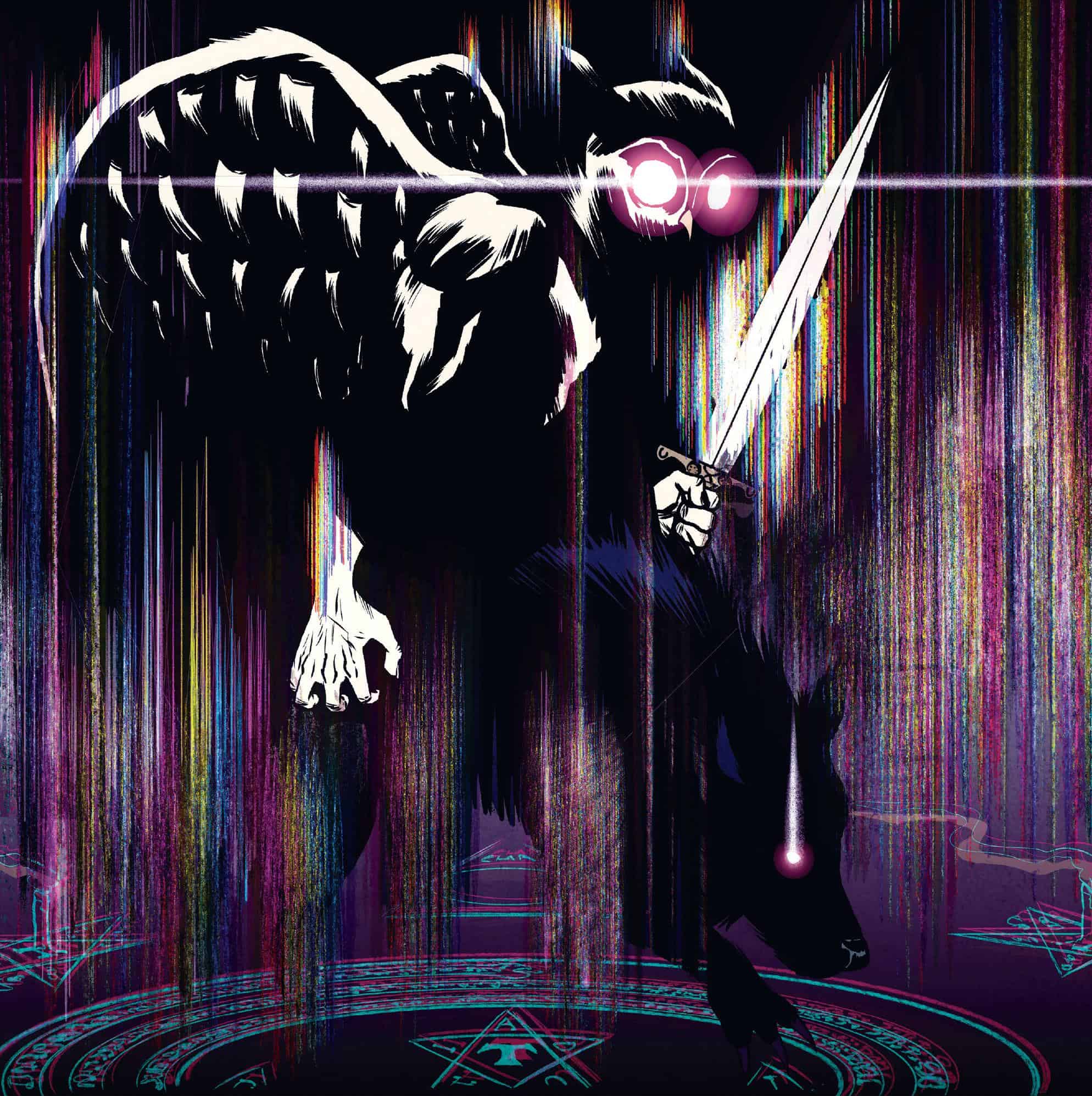Damn Them All #6

Recap
In the epic conclusion of the first story arc of Damn Them All, Alfie’s secret plans for his death are revealed! But it turns out Hell wasn’t all it’s cracked up to be–until his meddling made eternity a nightmare. Ellie will do everything she can to get what she needs from Theo, and the last demon she would have picked might just be the one to help. Will “Bloody El” be able to set the underworld right, or will someone else have to get the job done?
Review
Expanding a limited series to an ongoing one doesn’t always translate in comics. A book created with a definite beginning, middle, and end cannot constantly shift its story engine into the necessary gear for more extended, episodic storytelling that an ongoing could need. A book like Tom King and Greg Smallwood’s The Human Target is an example that theoretically could expand past its twelve issues, but pondering any resulting issues feels like diminishing returns. That’s not a knock on the creators’ skills or the quality of the story, but a simple fact that the title was built to be a contained mystery leading to a definitive endpoint.
In the same respect, BOOM! Studios giving a book like Damn Them All only six issues, as initially planned, would be a disservice to what is a title with a story engine that could spawn hundreds of problems. The almost procedural approach to hunting down and exercising the demons from the Ars Goetia and anything else lurking builds in a framework that provides a wealth of plots. At the same time, the moral complexity of characters like El and Dora ensures that there’s enough meat for the stories to grapple with the resistance but a willingness for change. The choice to expand the series to an ongoing one is one of the best moves BOOM could make for this title.
Damn Them All #6 – from writer Simon Spurrier, artist Charlie Adlard, colorist Sofie Dodgson with color assistance by Shayne Hannah Cui, and letters from Jim Campbell – brings the series’s first arc to a satisfying conclusion, revealing the chain of events that created the game of demonic Pokémon GO in London. Alfie, scared shitless of dying like a mortal, used a spell to vacate Hell of its demon populated, but that made the void worse for everyone in it and doomed the extra-dimensional beings to suffering here on Earth.
After El connects the dots and dispels Alfie to the eternal damnation of his own making (twice over), she realizes that the tables have turned again. Theo, the blind pharmaceutical suit who knows Alfie is bound not to hurt her, and Frankie, the mobster who’s hired her in the past, is gunning for more coins. He’s gutted Carlin for his cash, which El ensured found its way into the second-rate mage’s possession. Frankie takes it for himself, and with another coin hosting the fiery dog from Theo’s collection, El realizes she’s outmatched. Theo did kill Frankie’s wife but wiped the pain from the mobster’s mind, which sparked a realization for him. That power to twist and manipulate is worth more than any past grudges.
El gives up a coin to save herself, and the last trump card is revealed. Carlin’s coin was to summon Andras, the owl knight demon from the first issue. It easily kills Frankie but is supposed to be a weapon against Theo. Instead, El’s manipulation puts her on its shit list, and she’s only saved now, thanks to another summoning. El consciously decides to correct Alfie’s wrongs while Theo and the 500 Club plan their next moves. Dora, sick of Hawthorne’s twisted games, is led to a series of angels, looking to make a deal, more than likely related to the chaos Alfie has released into the world.

These six issues have worked as an excellent prologue to the larger story of El grappling with possible personal growth, operating under the guise of cleaning Alfie’s mess. Spurrier’s script, and by extension, the first arc, crystallizes this issue, locking in a tone and status quo that makes readers yearn for more. Spurrier unsurprisingly taps into what makes a hard-edge bastard character (see the Hellblazer) so great but infuses an additional layer of sympathy thanks to the finite sense of El’s story. This isn’t a character in a big two comic that has to exist in the same patterns indefinitely. Instead, she can be a bastard that uses Carlin as an unknowing trojan horse. Still, since her arc points to an inevitable form of atonement or redemption in some respect, there’s an extra layer of tragedy present.
Spurrier also nails the comic’s rhythm, giving Alfie’s reveal time to breathe before jumping into the demon action. Keeping with a Pokémon analogy, the action sequence feels like a perfect inverse of how a battle in those games (and anime adaption) go. Whereas most battles are long and drawn out, these demon spats are closer to western gunfights. It’s a lot of posturing, then a quick draw with the cleverer one winning before the demons return to their coins. It grounds the magic and fits it into the tone that the gritty crime elements establish while retaining an entertaining quality that showcases the demon and mage’s skill (or lack of).
The art and coloring do similar tricks to expose the characterization and conventions of this series, with Adlard and Dodgson using shadow to significant effect. The obfuscation of Alfie’s face throughout his appearance, both in flashback and as a summoned spirit in the present, is an example of how the art and coloring work to provide a distance from the character.

Rather than making him a flesh and blood character with a face that can emote, he’s drenched in shadow that relegates him closer to a catalyst or MacGuffin, which influences the story but separates him from any empathy. Even the demon’s El summons and uses get more sense of characterization from their design and coloring, highlighting the effect the artistic decision brings to the narrative.
The art and coloring also offer another opportunity to play with the conventions of reality established in El’s first summoning back in issue one. Here, as El and Frankie’s demons face-off, the two-dimensional fire dog, horse spirit, and feral lion feel different, thanks to the various colorful coloring effects and linework. Frankie’s coins have a softer, loose line rendering them, while El’s horse is created through more complex, more defined inks.
Andras exceeds all of these once summoned, with Adlard’s linework giving him an overwhelming, almost biblical appearance that makes the other designs seem tame. That combines with Dodgson’s coloring, rich oranges like a burning flame that showcase the fury radiating from the demon. It’s just a few panels but immediately pops from the other backgrounds on the page.
Final Thoughts
Damn Them All #6 is an arresting conclusion to the best magic comic series on shelves at the time of writing. Spurrier’s knack for writing slimy bastards with a heart of not-lead and crafting intricate but compelling lore ensures that there is something for fans of fantasy and non-fantasy alike to latch onto. Adlard’s art is the perfect level of gritty realism to clash with the incursion of demons, creating a level of dissonance on the page that reflects the offense to reality these creatures bring.
Dodgson and Cui’s coloring reinforces that disconnect while bringing beauty to the otherwise stark look of the series, digging into the emotional core of the characters and the demons in this issue specifically. Campbell’s lettering is an invisible but vital part of separating these demons from the ones that summon them and adds to the book’s overall aesthetic through the formatting of the data pages. They bring a level of order to the chaotic elements of the series.
Damn Them All is everything a book like Doctor Strange or Hellblazer should be, thanks in large part to the benefits of being a creator-owned work. It merges its crime and magic elements with an alchemy that should be impossible, thanks in large part to the expert craft on every level. With six issues down, here’s hoping for countless more to beat readers over the head with quality, in a way that would make El proud.
Damn Them All #6: It’s Always Hammerin’ Time
- Writing - 10/1010/10
- Storyline - 10/1010/10
- Art - 10/1010/10
- Color - 10/1010/10
- Cover Art - 10/1010/10





